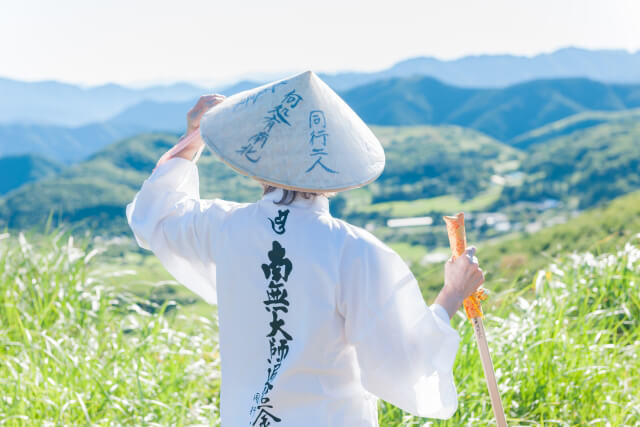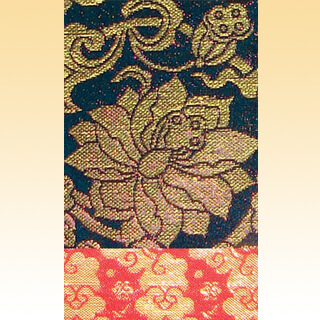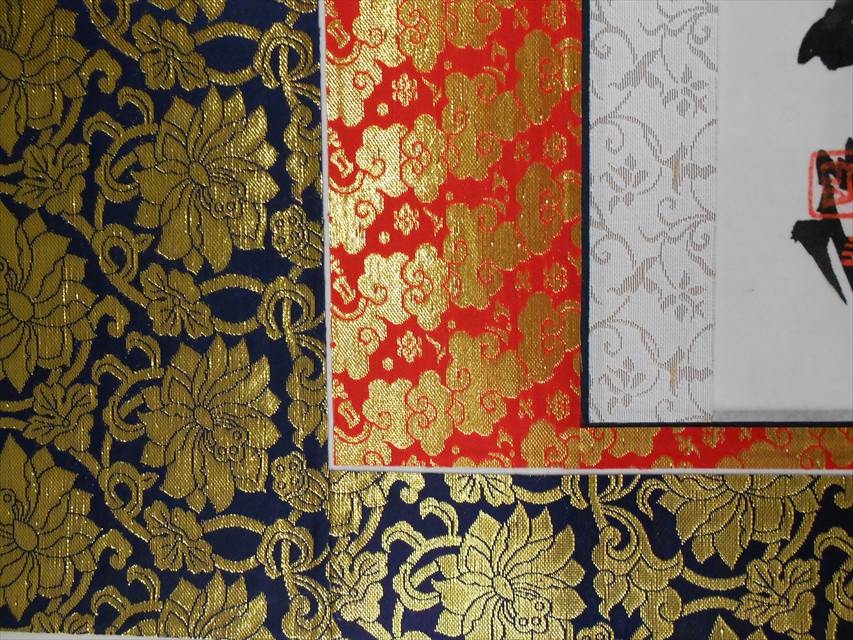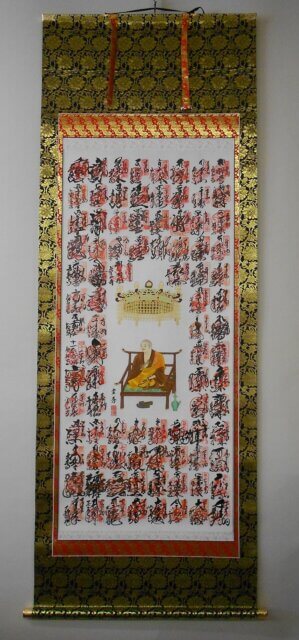A German Pilgrim’s Request for a Shikoku 88 Temple Pilgrimage Kakejiku Scroll Mounting

Contents
Introduction
At our mounting shop in Kobe, we receive not only domestic but also many international clients. This time, we would like to share a valuable experience where we rediscovered the charm of Japanese culture through an encounter with Kai-san, a visitor from Germany who had completed the Shikoku 88 Temple Pilgrimage.

Kai-san
Meeting with Kai-san
Kai-san visited our shop after completing a nōkyōjiku, a blank pilgrimage scroll, where he collected the stamps from all 88 temples of the Shikoku Pilgrimage. He came to have that scroll mounted into a kakejiku (hanging scroll) at our shop.
He has a deep knowledge of Japanese culture, and to our surprise, he also practices ninjutsu and speaks fluent Japanese. He is such an enthusiastic Japanophile that he visits Japan once a year, and his proficiency in Japanese allows him to communicate almost perfectly.
Choosing the Fabrics for the Kakejiku
Kai-san’s decisiveness and aesthetic sense left a strong impression on us. He quickly selected the “Renge” pattern (No. 05) from our Buddhist mounting collection. We were deeply impressed by his quick decision-making.

Rediscovering the Appeal of the Shikoku Pilgrimage
As our conversation progressed, the topic naturally shifted to the Camino de Santiago pilgrimage route in Spain. Listening to Kai-san’s experiences, we began to understand why European visitors are fascinated by the Shikoku Pilgrimage.
The appeal of the Shikoku Pilgrimage seems to lie in the combination of several elements:
- +The unspoiled natural landscapes of Shikoku
- +The peaceful, quiet environment
- +The trekking aspect of the pilgrimage
- +The sacred atmosphere of the entire island
- +The high level of awareness and warm hospitality of the locals toward the pilgrims
All these factors combine to create the unparalleled experience of the Shikoku Pilgrimage.
Completion of the Kakejiku
Kai-san’s kakejiku of the Shikoku 88 Temple Pilgrimage has been completed.
The chosen gold brocade fabrics harmonize beautifully with the pilgrimage stamps and the image of Kōbō Daishi Kūkai, creating a dignified yet calming beauty.

We sincerely hope that this kakejiku will preserve Kai-san’s memories of Shikoku for a long time.
Conclusion
At our shop, we continue to accept requests for the mounting of nōkyōjiku, the scrolls used to collect stamps during the Shikoku 88 Temple Pilgrimage. It is an honor for us to help shape the precious memories of both domestic and international clients through the traditional Japanese art of kakejiku mounting.
We are encouraged by the enthusiasm of people like Kai-san, who rediscover the value of Japanese culture. We will continue to treasure the perspective of “rediscovering Japanese culture” and respond with care to our overseas customers as well.
If you would like to know more about how a Shikoku 88 pilgrimages kakejiku is produced, please kindly watch this video.


